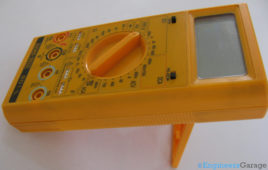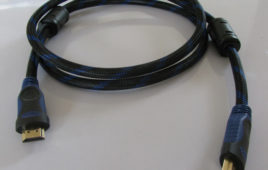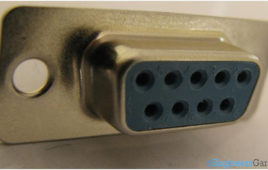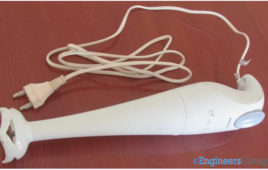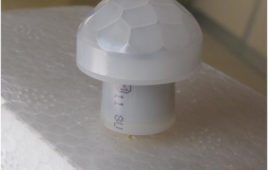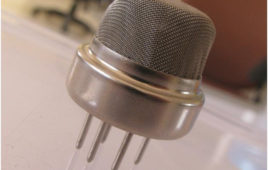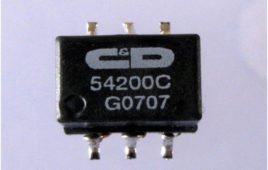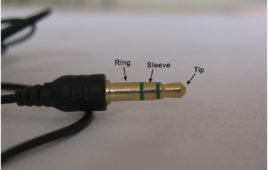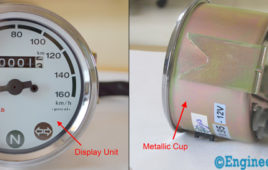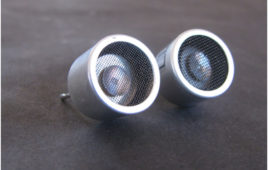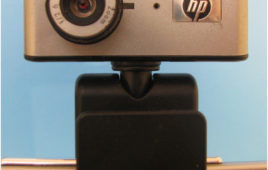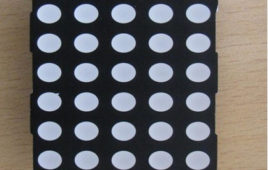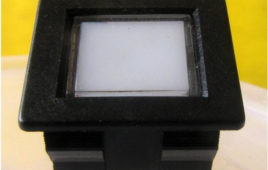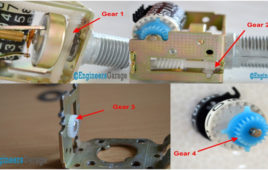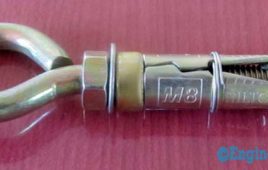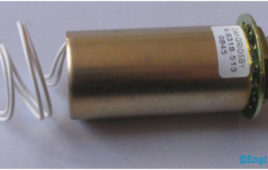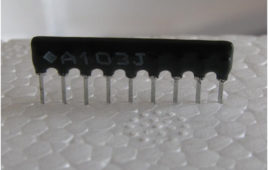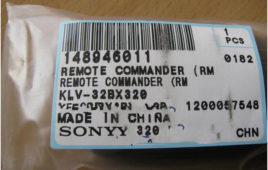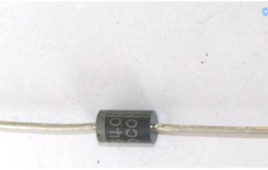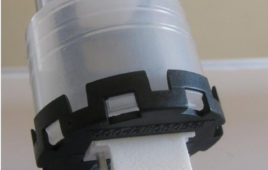As the name suggests, multimeters are those measuring instruments which can be used to calculate multiple circuit characteristics. Making them digital gives highly precise outputs as unlike their analog counterparts, there is no needle whose pointer is to be figured out. Multimeters are into electronic measurement purposes since long and are expected to stay for long and get more modifications of measuring quantities. Analog multimeters were initially in trend but required calibration and human error often caused errors in measurements. With digital measurements, results are not only more accurate but can also be resolved to a high level.
Insight – How HDMI Cable Works
To make the audio-visual entertainment experience as natural as possible is one of the major targets of electronic entertainment companies. The journey of televisions from Black & White to plasma and now to LEDs is a fair example of it. High definition digital recording has been made possible through DVDs and Blu-rays. However, to transmit the same quality of high definition data to the display, high quality interface is needed. In pursuit of this life like quality, electronics giants of the world: Sony, Thomson, Panasonic, Toshiba, Phillips and Hitachi, made a joint research group that has given one of the best ways to transmit and access video and audio, HDMI.HDMI stands for High Definition Multimedia Interface. A HDMI cable is a single cable that serves as link for audio as well as video applications. For a video recorded in high definition, a standard Audio-video component cable gives an output of 480 pixels per inch.
Insight – How RS232 Connector Works
Serial interfacing is one of the most common protocols to make two electronic gadgets communicate. In such interfacings, the data is sent sequentially and bit bybit. RS232 is one sub type of serial interfacing that was introduced in the year 1932. Available in 9 pin and 25 pin configurations, RS 232 pins allow data exchanges at the maximum of 256kbps. Some well known applications of these connectors include linking modems to computers and other micro controller based UART electronic gadgets. Of course, such an interfacing would require different types of connectors; in this case, RS232 connectors are used. The Insight covers a conventional 9 pin female RS232 connector. Let’s find out the outer and inner details of it.
Insight – How Immersion Blender or Hand Blender Works
Yes. This week’s Insight is a Hand Blender. On the last Saturday morning, after a full night’s work at the EG Labs, the whole Engineering Garage team gathered to make smoothies and sandwiches before retiring to bed at dawn (BTW, the Garage has enough space and equipments to be used as a kitchen, a rest house and a highly charged PS-3 arena during weekends), and one of our team members screwed the Hand Blender open. Thus, the Insight. Hand blenders were first invented by the Swiss and were straightaway recognized as a good time saver: a solution for instant food meshing, mixing, whipping and all the mishy-mashy things they do in kitchen. It is easy to guess that this light weight, a foot tall gadget houses a motor, a PCB and some (optional) accessories that would allow speed control and indicative light options etc. BUT: exactly what kind of motor does a simple blender have? How can it tolerate the forces generated by a motor, its body being made of plastic? Can its motor have different configurations? Let’s find out what the nerds in our team have discovered by reverse engineering a [Phillips HR1350] Hand Blender while sleepwalking.
Insight – Learn the Working of a Motion Sensor or PIR Sensor
The modern world is filled with gadgets that get excited when they sense human motion. Automatic doors in elevators and shopping malls, burglar alarms at houses and shops, automatic lighting systems, electronic amenities in washrooms are just a few examples where human presence or absence puts the device into active or passive state. Smart, right? Now, what if we tell you that behind this smart response to motion is a gizmo that does not even reach the 2cm mark in size. Known as Pyroelectric or Passive Infrared Sensor (PIR, in both cases), this small electronic device is the curious case for this Insight.How does PIR sensor selectively responds to human radiated IRs? Upto what range can this sensor work? What lies inside this sensor that makes it work? This and answers to more questions in this Insight on PIR sensors. What adds more charm to this Insight is that the Panasonic 10m sensor taken is also one of the smallest PIR sensors commercially available till date.
Insight – Learn the Workings of a Gas Sensor
In current technology scenario, monitoring of gases produced is very important. From home appliances such as air conditioners to electric chimneys and safety systems at industries monitoring of gases is very crucial. Gas sensors are very important part of such systems. Small like a nose, gas sensors spontaneously react to the gas present, thus keeping the system updated about any alterations that occur in the concentration of molecules at gaseous state. Gas sensors are available in wide specifications depending on the sensitivity levels, type of gas to be sensed, physical dimensions and numerous other factors. This Insight covers a methane gas sensor that can sense gases such as ammonia which might get produced from methane. When a gas interacts with this sensor, it is first ionized into its constituents and is then adsorbed by the sensing element. This adsorption creates a potential difference on the element which is conveyed to the processor unit through output pins in form of current. What is this sensing element? Is it kept in some chamber or is kept exposed? How does it get current and how it is taken out? Let’s find out in this Insight!!!
Insight: How a current transformer works
Transformer is an electrical device which works on the principle of Faraday’s law of electromagnetism used to step up or step down the input [[wysiwyg_imageupload::]]voltage.Transformers are of different types for example: Power transformers, Current Transformers, Potential Transformers, Pulse Transformer, RF Transformer and Audio transformers. The most common application of Current transformer is to reduce the current and provide galvanic isolation in current sensing devices. Some typical examples include SMPS, motor control and electronic lightning ballasts.Some of you would know how a current transformer works. Windings, Core, connections and other things which many of you have surely seen in the books or in the diagrams.But how many of you have got the chance to see how actually it looks from inside. A small instrument but which works greater than its size. In today’s insight you will know how current transformers are made to work.
Insight – How Head Phone TRS Connector or Jack works
Ever wondered how are wires connected to a connector. How different number of wires are connected to segments of the connector? A connector aka jack for the earphone, headphone, microphone, like any other gadgets has an equally interesting chapter in the book s of engineering. It is among the cheapest part but not the technically inferior. It deserves its attention from the engineers for its design and quality.The connector plays an important part of tranferring signals from the device like mobile, laptops, music players etc to the earphone and the microphone and vice versa. Even a small problem may lead to an unplesant experience with the device. The connector has three contacts/segments/parts called the TIP, RING, and the Sleeve. Therefore it is also called the TRS connector.
Insight – How Analog Speedometer Works
You may know how to drive or you are just like me who always tag along as side kick, but there is one part of automobile that is voluntary known to each one of us “Speedometer”. You may not be driving but one step on accelerator by the driver and you are squirming on your seat just as the needle on the meter. Ha!We have never really thought how does a needle move on the meter? What makes the number change on odometer? We look at speedometer but never really notice it. But not anymore join me in this insight to learn all about speedometer. Let’s understand in depth all about it.
Insight – Learn the Working of Ultrasonic Sensors
Ultrasonic sensors are devices that use electrical–mechanical energy transformation to measure distance from the sensor to the target object. Ultrasonic waves are longitudinal mechanical waves which travel as a sequence of compressions and rarefactions along the direction of wave propagation through the medium. Apart from distance measurement, they are also used in ultrasonic material testing (to detect cracks, air bubbles, and other flaws in the products), Object detection, position detection, ultrasonic mouse, etc.These sensors are categorized in two types according to their working phenomenon – piezoelectric sensors and electrostatic sensors. Here we are discussing the ultrasonic sensor using the piezoelectric principle. Piezoelectric ultrasonic sensors use a piezoelectric material to generate the ultrasonic waves.
Insight: A look inside the components of a webcam
Webcam is a device used to capture images, audio and videos. Webcam are either inbuilt or can be externally attached with the laptop or the computer. The most common application of a webcam is video chat, video recording, image capturing. A webcam generally consist of a lens, an image and sound sensors, electronic circuitry to process the data and send it to PC. A variety of webcams with different features are available in the markets. Depending on the features and quality, the technologies used and the prices vary. However the basic function remains the same. You can see an optical lens to capture the images/videos and a small hole to capture sound. The bottom part of the body consists of a plastic casing which provides support to the webcam and a mechanism to fix the webcam on the top of the laptop.
Insight – How an LED dot matrix display works
Light emitting diodes aligned in a form of matrix constitute a dot matrix display. It is commonly used to display time, temperature, news updates and many more on digital billboards. Dot Matrix Display is manufactured in various dimensions like 5×7, 8×9, 128×16, 128×32 and 128×64 where the numbers represent LEDs in rows and columns, respectively.Arrangement of the LEDs in the matrix pattern is made in either of the two ways: row anode-column cathode or row cathode-column anode. In row anode-column cathode pattern, the entire row is anode while all columns serve as cathode and vice-versa pattern is there in row cathode-column anode. LED wafers are glued to the bottom of the segments and glow when powered ON. The interesting part is that 35 LEDs are controlled by using a combination of 14 pins. Conductor tracks are laid all over the board to power each LED. Let’s proceed to know in depth about how a dot matrix display works.
Insight – Learn the workings of a capacitive touch sensor
Everything in today’s digital devices world is becoming a touch away. Whether it is filling an early morning coffee mug or setting the timer for washing machine or turning ON the display of your PC.Capacitive Touch Technology is widely used in touch sensing devices. Less time response and environment adaptive features made it popular between the manufacturers. Some more applications are water purifiers, kitchen appliances, vending machines and switches.Most of us have surely come across capacitive touch sensor in our day to day life but how many of us thought about the working principle behind it.Change in capacitance is used to sense the touch in capacitive display. Amazed? How can a two metal plate component which stores charge can sense the touch? Answer to the above question will be explored in this Insight.
Insight – How Does an Odometer Work
Are you all set to hack the km readings displayed on your vehicle dashboard!Let us explore the science behind the working of an Odometer, a mechanical device which shows the distance traveled by your vehicle in digits. With traces of its invention found in history since 15BC, it has been reinvented since then in different forms. We all have seen the odometer working. When the last digit changes from 0 to 9 it moves the adjacent digit by 1 unit and so on. Ever wondered what causes digits of an odometer to change the adjacent digits by precisely 1 unit? How does a combination of rings interconnected with each other by means of gears designed to perfection can display the distance traveled by a vehicle to such an accuracy?Are you all set to empower yourself with the knowledge to crack the secrets behind the Km reading of your vehicle? Read ON….
Insight – How Expandable Screw Works
In my latest conquest of DIY i.e. Do It Yourself mission, I wanted to learn about a SCREW and not just our simple screw but most recent addition in the family of screws i.e. Expandable Screws. I found out recently that the air conditioner on my second floor window is placed using these screws. So, when I started researching more I learnt that these screws were specifically designed for installing heavy objects on concrete walls or for masonry purpose. Some common examples are installing dish antenna on the roof, holding the shade to cover your car or open area, tightening a rope to climb the wall etc .A normal screws gains their capacity to hold loads by creating an interlock with the part in which they are inserted. For example a screw is inserted in a wall or in a wooden plank etc.
Insight – How Tubular Solenoid Works
Solenoids are a well known application where magnetic fields are used to create controlled magnetic force. Solenoids are used in various industries where they [[wysiwyg_imageupload::]]serve the purpose of hydraulic valves, current limiting switch, steering control of heavy machines etc. This version of Insight details with DC operated tubular solenoid which is often used as an actuator. Comprising of a metallic can, coil, soft iron cored plunger along with insulator coating and connecting wires, linear solenoids are almost noiseless. Depending upon the movement of the plunger, these solenoids can be divided into push type (where plunger goes inside the metallic can) and pull type (plunger comes out of the tin can). Tubular solenoids can work for longer hours without getting their coil overheated or burnt out. Let’s find out what more constructional and operational features of one such tubular solenoid in this Insight.
Insight – How Network Resistor Works
Network resistor is a passive circuit element that is a combination of multiple resistances. It forms a convenient solution when the user needs multiple resistances [[wysiwyg_imageupload::]]while constructing a circuit. The manner in which the constituent resistances are combined can vary according to the circuit requirement. Hence, this type of resistor can be used to condense the circuit with additional benefits of low costs and improved resistance tolerance matching.This Insight covers an A103J 9 pin network resistor. It provides resistance from 10 Ohms to 4.7 Mega Ohms. The small size of the resistor makes it easy to connect to a circuit.In the 9 pinned structure of the resistor, the first pin serves as the common terminal while the other 8 represent resistances. The pin that has a dot or a similar marking (quadrilateral in this case) is the first pin of the resistor.
Insight: The internal working of a remote control
The Oxford Dictionary defines a remote control to be a “control of a machine or apparatus from a distance by means of radio or infrared signals transmitted from a device”. So, when we decided to go inside a conventional remote control, we were stuck: which one to take? There are those for LCD TV, others for gaming consoles, for the car entertainment systems and some that work for all kinds of systems. At the very first sight, one can notice difference in designs, features, the manner they are powered and several such features. But upon giving a slight thought, it is easy to understand that all the remotes are performing the same basic task: controlling outputs of an electric/electronic device. So, here we are, with a Sony RMGA020 LCD TV Remote used for their 32 inch KL television series. Interestingly, Sony calls their remote to be “Remote Commanders”. Since the trend nowadays is to equip remotes with a hoard of features and create the main gadget as simple as possible, calling them “Remote Commanders” is fair enough.
Insight – How Diode Works
This component needs no introduction. One of the first semiconductor based engineering components, diodes are an indispensible necessity for any current modern gadget or circuit. They are the basic logic block – the most fundamental unit.These two terminal-ed nonlinear passive elements ideally conduct only one way and hence protect the circuit as well as the source from any damage. Diodes are widely used in rectifier circuits, limiters, communication circuits, multiplier circuits and signal clippers as well as clamper circuits. This Insight will give an in depth view of a diode’s physicality. Read more to find out about how a diode works through images of its internal and external parts such as epoxy layer, rubber coat, metallic shell, inner semiconductor traces etc.
Insight – Learn the Working of a Turbidity Sensor
Turbidity is the quantitative measure of suspended particles in a fluid. It can be soil in water or chocolate flakes in your favorite milk shake. While chocolate is something we soo want in our drinks, soil particles are totally undesired. Keeping aside the potable purposes, there are several industrial and household solutions that make use of water in some or other manner – for instance, a car uses water to clean the windshield, a power plant needs it to cool the reactors, washing machines and dish washers depend on water like fish. Now the question arises here: how do these machines get to know about the turbidity? We are blessed with nature’s evolutionary gift of senses to find out soil in the water, but what about your washing machines? No eyes to see, to tongue to taste, no skin to feel but just a plastic body with some buttons and motor inside. How does it so smart to work as per soil suspension??? Let’s find out in this Insight of a General Electric’s Turbidity Sensor. Interestingly, this sensor model has an additional feature to sense temperature changes. Let’s find that out too!!

